Top most famous architectural works in Korea #2
Like a gentle love story of dramas in the land of kimchi, traditional Korean architectural style is a harmonious combination of elegant aesthetics and the gentle beauty of nature. Koreans often focus on using neutral colors, originating from the surrounding natural landscape to create the quintessence of ancient and modern architecture.
Hwaseong Fortress and Citadel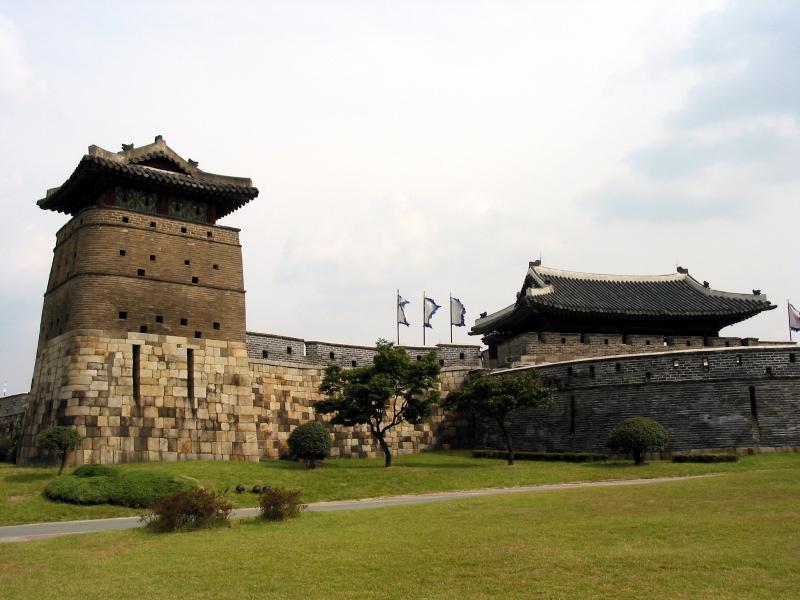 Located in Gyeonggi Province, Hwaseong Fortress and Ancient City were built in the 18th century by a famous architect of the Realist school with the purpose of protecting the tombs of the Joseon Dynasty's ancestors. It can be seen that this massive and majestic fortress is a diverse combination of different architectural schools, from ancient Japanese and Chinese citadels to medieval European citadels. Considered the pinnacle of military architecture in the world, the citadel is crafted from bricks and marble with a total length of 5.74 km and 48 large and small surrounding structures. In addition to its beautiful name "The Citadel of Filial piety", Hwaseong Fortress is also an impregnable defensive terrain and was considered the capital of South Korea at that time.
Located in Gyeonggi Province, Hwaseong Fortress and Ancient City were built in the 18th century by a famous architect of the Realist school with the purpose of protecting the tombs of the Joseon Dynasty's ancestors. It can be seen that this massive and majestic fortress is a diverse combination of different architectural schools, from ancient Japanese and Chinese citadels to medieval European citadels. Considered the pinnacle of military architecture in the world, the citadel is crafted from bricks and marble with a total length of 5.74 km and 48 large and small surrounding structures. In addition to its beautiful name "The Citadel of Filial piety", Hwaseong Fortress is also an impregnable defensive terrain and was considered the capital of South Korea at that time.
Hwaseong Fortress is a work built by King Jeongjo, the 22nd king of the Joseon Dynasty, to show his filial piety towards his father, Crown Prince Sado. Crown Prince Sado was locked in a rice barrel by his father, King Yeongjo the 21st generation of Joseon, and starved to death. Immediately after ascending the throne, King Jeongjo moved his father's grave to Hwasan Mountain in Suwon. He also changed the name of Suwon city to Hwaseong, building Hwaseong into a new city to relocate people there. Hwaseong Fortress is considered a military project that converges the quintessence of East and West science and technology of the century. XVIII, most of the citadels were preserved intact and performed both military defense and commercial functions.
Ancient capital Gyeongju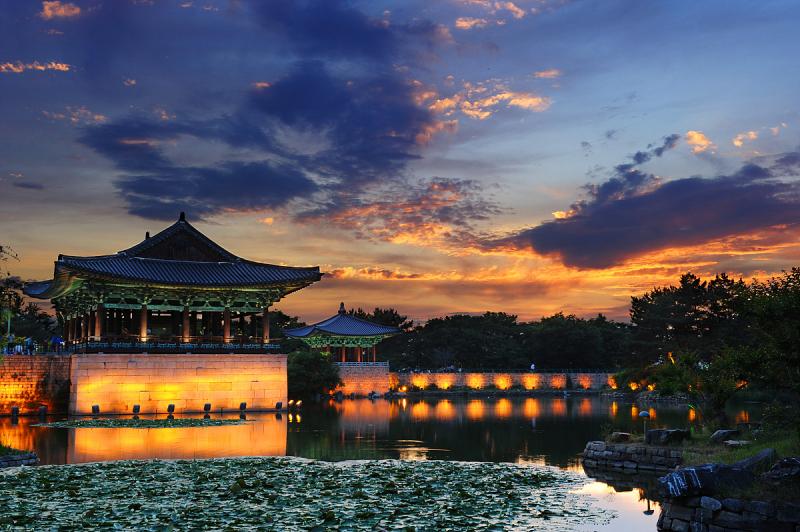
Unlike other dynamic and vibrant cities like Seoul or Busan... what visitors feel as soon as they set foot in Gyeongju is the ancient serenity from the scenery, architecture or even the atmosphere. It still has a bit of an old feel, because this place was once the ancient capital of Korea under the illustrious Silla dynasty - the dynasty that unified the Korean peninsula into an independent and sovereign country. The Silla Dynasty is the place that marked the beginning of an ancient Korean civilization when the country was unified. At that time, Gyeongju was one of the largest capitals in the world. Although the dynasty eventually collapsed, the traces and cultural influences of the dynasty still echo to this day, with Gyeongju being the place that leaves the deepest mark.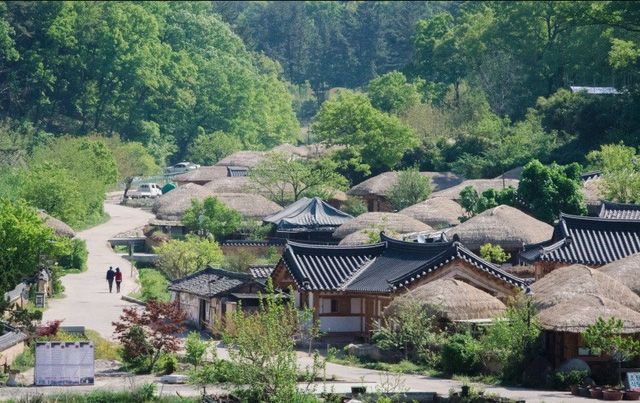
Gyeongju is famous for its royal tombs, ancient sacred temples or magnificent palaces. There are at least 3 cultural heritages here that have been recognized by UNESCO as world cultural heritages: Bulguksa Temple, Seukguram Buddha Cave, Gyeongju National Park and many other interesting attractions that people even talk about. Coming to Gyeongju, even a week or a month is not enough to fully appreciate the beauty of this place. Another special feature when coming to Gyeongju is that you will see graves scattered everywhere. Gyeongju and surrounding areas still preserve more than 200 kings' tombs. The graves are covered with grass and built high, from a distance you might mistakenly think these are hills. In particular, the most prominent here is the Thien Ma tomb, also known as the "Steed of Heaven's Tomb" - the tomb of a Silla king who reigned around the 5th century, the dynasty that gave birth to More than 10 thousand masterpieces are currently kept at the Gyeongju National Museum.
Cheomseongdae Observatory Asia's oldest Cheomseongdae Observatory in Gyeongju province - Korea is one of the interesting destinations in the land of kimchi. This is the first scientific observatory in the world built in the form of a stone tower. In addition to the travel companies that regularly lead tourists to visit, this place is also a destination that attracts young people to learn history and exchange cultures. According to history books, in the 7th century, Queen Seondeok of the Silla Dynasty (632 - 647) built this observatory. Astrology tower has a stone structure that is a unique combination of ancient architecture. The entire observatory is 9.5 m high. This is Korea's 31st treasure and an important heritage site in the ancient capital Gyeongju heritage complex. On December 20, 1962, it was recognized by UNESCO as a world cultural heritage.
Asia's oldest Cheomseongdae Observatory in Gyeongju province - Korea is one of the interesting destinations in the land of kimchi. This is the first scientific observatory in the world built in the form of a stone tower. In addition to the travel companies that regularly lead tourists to visit, this place is also a destination that attracts young people to learn history and exchange cultures. According to history books, in the 7th century, Queen Seondeok of the Silla Dynasty (632 - 647) built this observatory. Astrology tower has a stone structure that is a unique combination of ancient architecture. The entire observatory is 9.5 m high. This is Korea's 31st treasure and an important heritage site in the ancient capital Gyeongju heritage complex. On December 20, 1962, it was recognized by UNESCO as a world cultural heritage.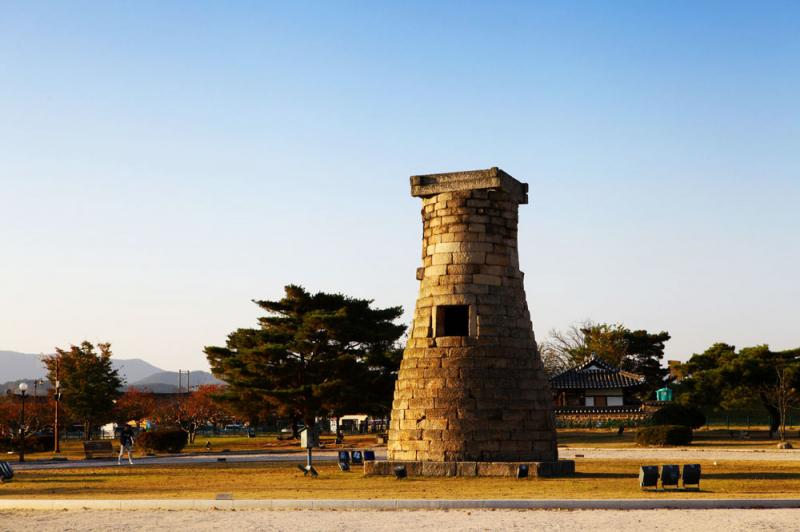
With the unique shape of a stone tower, Cheomseongdae observatory - a beautiful masterpiece of the old Silla dynasty, is known as "the first and oldest stone astrology observatory in the history of astronomy." world". As the 31st treasure of Korea, Cheomseongdae astrology station was ordered to start construction by Queen Seondeok of the Silla empire in the 7th century. With a height of 9.5 m, it is not only an ideal place to study. To save the stars, at sunset, this unique observatory also embodies a wonderful creation and captivates the eyes of every visitor. Today, this ancient building is also a destination for students to learn about Korean history and cultural exchange.
Bukchon Hanok ancient village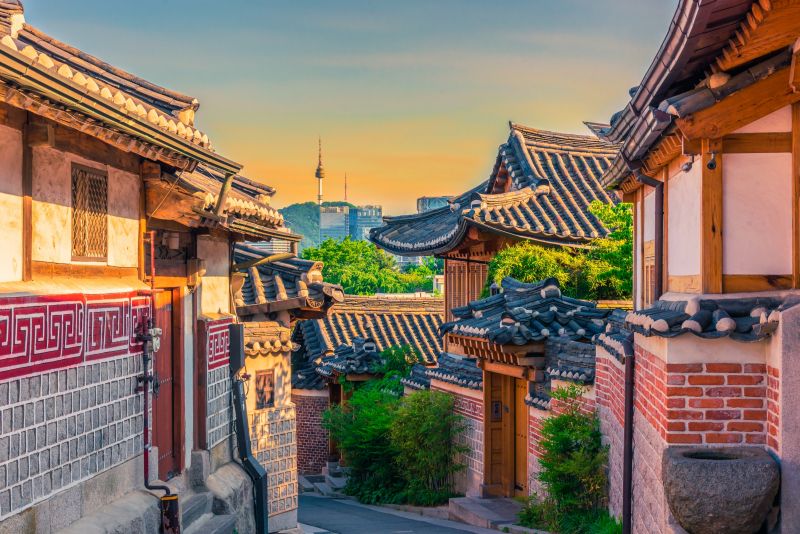
If you want to find a place to explore the long-standing traditions and unique culture of Korea, do not miss the ancient village of Bukchon Hanok on your journey. Bukchon Hanok Ancient Village is located inside Seoul city, located between Jongmyo Shrine, Changdeokgung Palace and Gyeongbokgung Palace. This is a traditional craft village that has been preserved intact in a 600-year-old urban area, including many alleys, hanok houses, and ancient pagoda roofs. Bukchon Hanok Village is built in a unique architectural style. It is unique not only because of its rustic but solid appearance on the outside but also because of the harmonious decorative style on the inside of the house.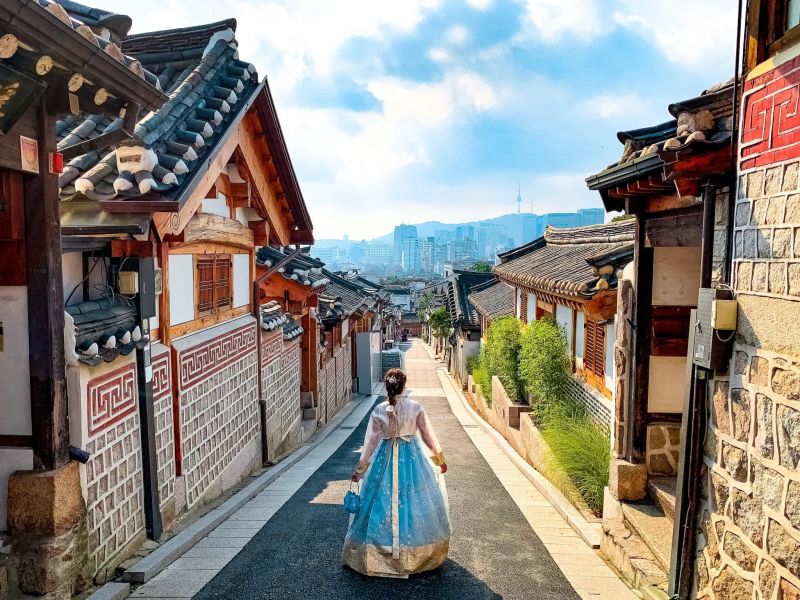
The construction materials are mainly natural materials but are carefully selected, so until now many houses still retain their ancient appearance nestled under rows of ginkgo trees. The doors in houses in Hanok Bukchon village are quite wide and made of wood with elaborate decorative motifs. Most of the houses in the village are numbered. The vertical alleys, the ash-colored tiled roofs extending along the slopes, the roads paved with blue stones or the ceramic jars of kimchi salt and soybean making on the porch are full of nostalgia. Today, there are very few people living in this area; instead, the houses are used as traditional restaurants, guesthouses, teahouses and cultural centers. The village is a perfect space filled with Korean history.
When looking at the above famous architectural works, we will surely feel a gentle beauty that spreads softly in people's hearts. The buildings here, like the poetic country of Korea, always have a unique attraction to architecture enthusiasts around the world.

































